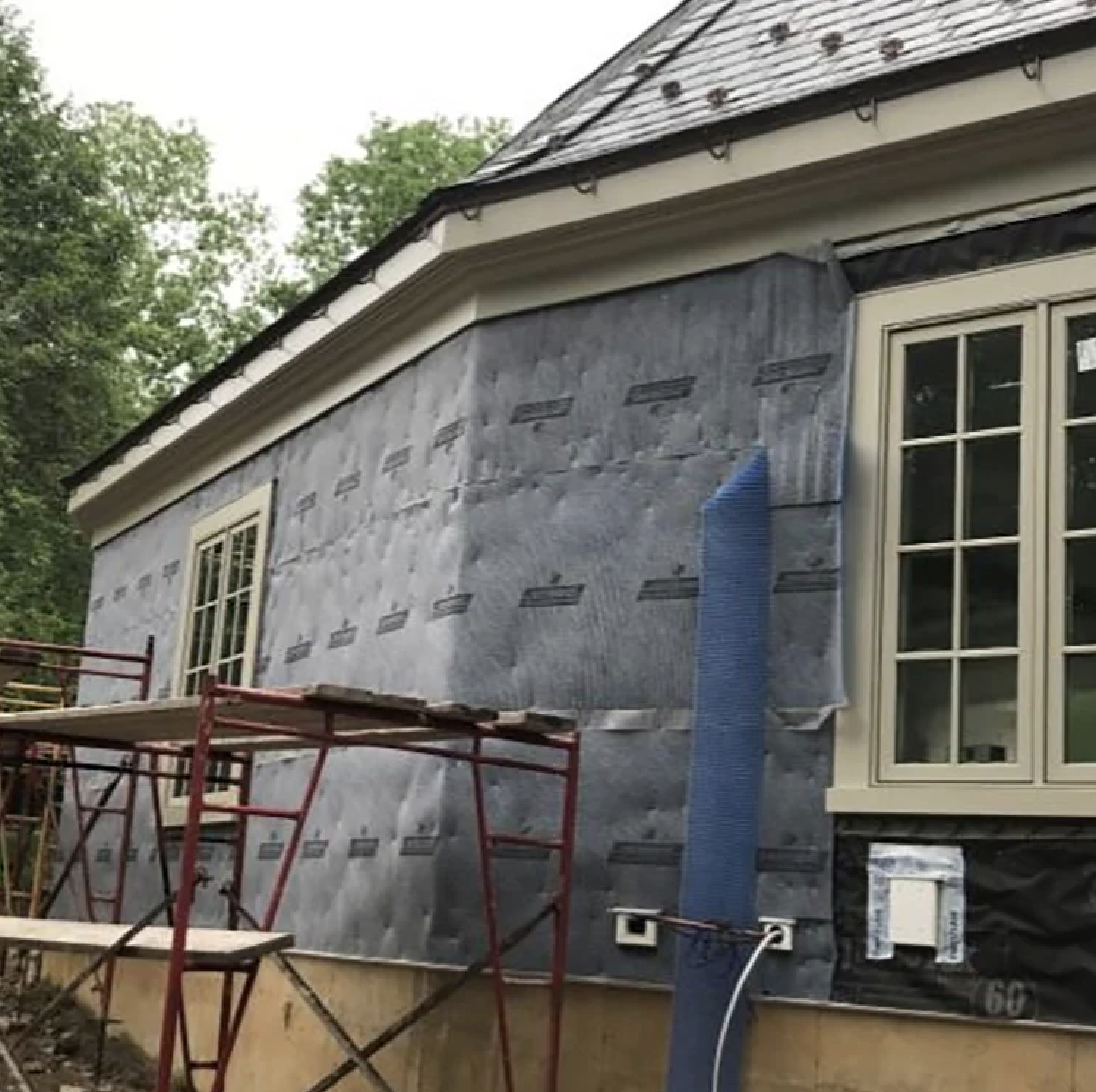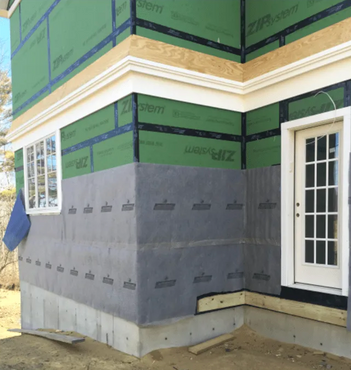Posted by Spycor Building on Mar 12th 2025
Moisture is one of the most persistent and destructive threats to buildings, causing mold growth, wood rot, and structural deterioration over time. If left unchecked, moisture-related damage can compromise the integrity of a structure, lead to expensive repairs, and create an unhealthy indoor environment. To prevent these risks, modern construction relies on rainscreen systems, a highly effective and long-lasting solution for managing moisture and improving a building’s durability.

A rainscreen system acts as a protective barrier against the elements, preventing rainwater from seeping into a building’s walls while allowing trapped moisture to escape. This crucial ventilation system not only enhances the lifespan of the building but also improves energy efficiency and indoor air quality. Whether you are a professional home builder, architect, contractor, or a DIY enthusiast, understanding the benefits of rainscreen cladding will help you make informed decisions when constructing or renovating a home or commercial property.
By investing in a proper rainscreen system, property owners can ensure their buildings withstand the test of time, maintain their aesthetic appeal, and provide a safe, comfortable environment for occupants. In the following sections, we’ll explore how rainscreen systems work, their key benefits, and why they are essential for modern construction.

What is a Rainscreen System?
A rainscreen system is an advanced exterior cladding technique designed to protect buildings from moisture infiltration, a major cause of structural damage. It consists of multiple layers that work together to shield the building’s primary structure while allowing airflow between the outer cladding and the inner wall. This ventilated air gap enables trapped moisture to escape, reducing the risk of water damage, mold growth, and material deterioration over time.
Unlike conventional siding, which can trap moisture and accelerate decay, a rainscreen system actively manages water exposure by creating a drainage and ventilation space. This makes it a vital component in modern construction, particularly in areas prone to heavy rainfall, high humidity, or extreme weather conditions. Whether used in residential homes, commercial buildings, or large infrastructure projects, a well-designed rainscreen system significantly enhances a building’s durability, efficiency, and aesthetic appeal.
Benefits of a Rainscreen System
1. Superior Moisture Protection
Water intrusion is one of the leading causes of building decay, leading to issues such as:
- Wood rot and structural weakening
- Mold and mildew growth, which can affect indoor air quality
- Cracks and spalling due to freeze-thaw cycles
A rainscreen facade serves as the first line of defense by deflecting rainwater and directing it away from the primary structure. Any moisture that does penetrate the outer cladding is quickly evaporated through the air gap, preventing it from getting trapped inside the wall system. This continuous drying process ensures that the building remains protected against long-term moisture-related damage.
2. Enhanced Energy Efficiency
A properly installed rainscreen cladding not only protects against moisture but also contributes to thermal insulation. The air cavity between the cladding and the main wall creates a buffer zone, reducing heat transfer between the building’s interior and the outside environment. This leads to:
✔️ Better temperature regulation inside the building
✔️ Reduced reliance on heating and cooling systems, lowering energy bills
✔️ Less strain on HVAC systems, increasing their lifespan
By acting as a thermal break, a rainscreen system minimizes heat loss in winter and reduces heat gain in summer, making it an essential feature for energy-efficient buildings.
3. Extended Building Lifespan
Structural deterioration due to water damage can lead to costly repairs and renovations. By integrating a rainscreen system, property owners can extend the lifespan of their buildings and reduce maintenance expenses.
Key longevity benefits include:
✔️ Protection against wood rot, corrosion, and material degradation
✔️ Minimized risk of cracks and warping due to seasonal expansion and contraction
✔️ Reduced need for frequent exterior repainting and repairs
This long-term durability makes rainscreen cladding a cost-effective investment for both residential and commercial properties.
4. Improved Aesthetic Appeal
Beyond its functional benefits, a rainscreen system offers greater design flexibility and aesthetic enhancement for any structure. Available in a variety of materials, colors, and textures, rainscreen siding allows builders, architects, and homeowners to achieve a modern, stylish appearance without compromising on performance.
Popular materials include:
✔️ Wood – Offers a warm, natural look while being durable when properly treated
✔️ Metal Panels – Provides a sleek, contemporary design with excellent weather resistance
✔️ Fiber Cement & Composite Panels – Low-maintenance and highly versatile for different architectural
styles
By improving both functionality and curb appeal, a rainscreen system can increase the value and marketability of a property, making it a smart choice for new constructions and renovations alike.

Why Invest in a Rainscreen System?
A rainscreen system is much more than just an exterior cladding option; it is a cutting-edge, high-performance solution that brings a wide range of benefits to any building. As an integral part of modern construction, a rainscreen system offers unparalleled protection against moisture, which is one of the most persistent threats to the structural integrity of buildings. This protection not only helps to prevent water damage and mold growth, but also preserves the overall health of your property, ensuring that it remains safe, dry, and durable for years to come.
Energy efficiency is another significant advantage that comes with investing in a rainscreen system. By providing an effective thermal break between the outer elements and the internal structure, it helps regulate the building's temperature. As a result, property owners benefit from reduced heating and cooling costs, making it an eco-friendly solution that can also contribute to lower utility bills over time.
Moreover, the durability that a rainscreen system offers cannot be overstated. By reducing moisture buildup and protecting against the elements, it extends the lifespan of the building’s exterior and minimizes the need for frequent repairs or replacements. This means fewer maintenance costs over the long term and less hassle for homeowners and builders. Not only does this protect your investment, but it also helps preserve the aesthetic appeal of the structure.
Speaking of aesthetics, a rainscreen system is a highly versatile design solution that allows you to create a modern, sleek, and visually appealing exterior. With a wide variety of materials available—such as wood, metal, composite panels, and fiber cement—there is an option to suit any architectural style. Whether you're looking for a contemporary urban look or a more natural, rustic feel, a rainscreen system enhances the curb appeal of any building, making it more attractive to potential buyers or tenants.
Incorporating a rainscreen system into your construction project is not just a practical choice; it’s a forward-thinking investment that ensures your property is not only durable and energy-efficient, but also sustainable and aesthetically pleasing.
CLICK HERE to check the best rainscreen for your building project and discover how you can enhance your construction with this durable, energy-efficient, and stylish solution.


